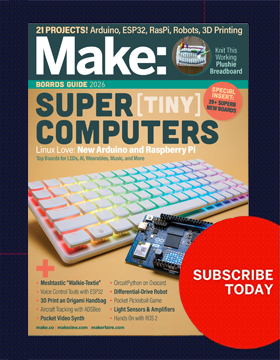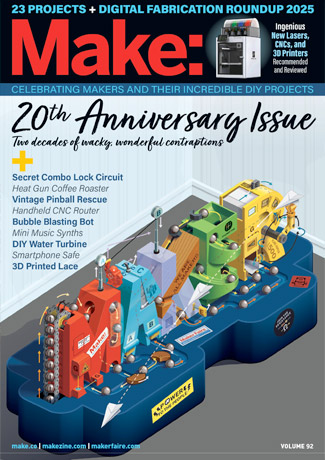
Club-Mate is a German club beverage that basically consists of lightly-carbonated, lightly-sweetened, heavily caffeinated tea. Somehow it was adopted by the German and Austrian hacker scene as their official staying-up-late-and-coding beverage. It’s become so popular that it’s been imported to the U.S. where it fetches prices as high as $10 a bottle. Despite these hurdles, it has caught on here as well with hacker magazine 2600‘s parent organization 2600 Enterprises serving as distributor. Last year Nick Farr of Hackers on a Plane made a road trip with a bunch of cases of Club-Mate and sold them from city to city, ending up at DefCon in Las Vegas.
Despite the efforts of 2600 and Farr to spread the Club-Mate love, the stuff remains difficult to get in the U.S. — it must be shipped by freighter from Europe. Because of these logistical hurdles, and plain ole hackerly initiative, several individuals and groups have tried to brew their own from yerba-maté tea, sugar, and caffeine powder.
Open Mate
A group of Hack Pittsburgh members wanted to bring Club-Mate to the Open Source world, so they created Open Mate.
After the members meeting last night, the M-team (Marek, Marty, Matt S., and Matt M.) brewed our first batch of Open Mate soda. Inspired by the Club Mate that Marty had ordered, but put off by its closed-source nature (hey, we are a hackerspace here!), we realized that we should brew our own. After acquiring some yerba mate tea, caffeine powder, sugar, and kegging equipment, the first batch is brewed!
Interlock Rochester’s Open Mate
The advantage of an open source recipe is that anyone can pick it up and brew their own batch. Interlockroc’s Open Mate spinoff experimented with adding some citrus juice, with (apparently) dubious results.
We finally got to do some beta tasting this past Thursday, and all testers agreed that it was yummy and pretty faithful to the original product. I have since sat down for a more in-depth side-by-side comparison (not double-blinded, mind you), and I feel our recipe — although quite tasty — has come up a bit short compared to the real deal. The sweetness is spot on, but there is a complexity and depth to the tea flavor that is missing in our beverage.
Noise Mate / Sudo Pop
San Francisco’s Noisebridge hackerspace similarly wanted to brew their own Club-Mate, but quickly began playing with the recipe, and therefore changed the name to Sudo Pop, describing it as a “yerba mate ginger beer.”
Dave-Mate
Dave Toews of Minneapolis’ Hack Factory bought a case of the stuff, but decided he wanted to create a more economical alternative using Club-Mate’s signature ingredient, yerba maté. He bought a sack of dried yerba maté tea and began mixing and experimenting. The result, which he calls Dave-Mate, is a close match for the German soda, with the main difference being more of a “tea-ey” taste, which Dave chalks up to Club-Mate being brewed with maté syrup rather than actual leaves. I wrote up Dave’s experiment for MAKE Vol. 23.
Tschunk, a Club-Mate Cocktail
It’s inevitable: as soon as Club-Mate began to take off, people tried to figure out how to make it into a cocktail. This is usually called Tschunk, though the precise recipe varies. Most variants call for limes to cut up and muddled with sugar at the bottom of a glass, then filled ice, light rum and Club-Mate. On the other hand, hacker Strom Carlson has his own Tschunk recipe that uses lime juice instead of lime chunks.
Do you know of any other Club-Mate recreations or Tschunk recipes? Send me a link and I’ll add it to the list, or leave a comment!
From the pages of MAKE Volume 23:

MAKE Volume 23, Gadgets
This special issue is devoted to machines that do delightful and surprising things. In it, we show you how to make a miniature electronic Whac-a-Mole arcade game, a tiny but mighty see-through audio amp, a magic mirror that contains an animated soothsayer, a self-balancing one-wheeled Gyrocar, and the Most Useless Machine (as seen on The Colbert Report!). Plus we go behind the scenes and show you how Intellectual Ventures made their incredible laser targeting mosquito zapper — yes, it’s real, and you wish you had one for your patio barbecue. All this and much, much more.
ADVERTISEMENT

Computer programmers have always loved caffeinated beverages, whether Mountain Dew, Jolt, or plain old coffee. It helps them keep their groove going overnight as they crank out code. German hackers, however, prefer a lightly carbonated yerba maté iced tea called Club-Mate (kloop MAH-tuh) and lately this beverage has made its way to the United States where it’s caught on among the homegrown hackerati.
Emmanuel Goldstein, publisher of hacker zine 2600: The Hacker Quarterly, first encountered Club-Mate at a convention in Germany.
“I noticed all of these German hackers running around with these glass bottles filled with some sort of energy drink. It was a pretty weird scene,” Goldstein says. “Then the Americans tried it out, and all they could do was talk about how amazing it was. In front of my eyes they became addicted.”
Hackers seem to love the fact that Club-Mate keeps them up at night without the crashes and jitters that accompany other energy drinks. “The buzz just slowly dissipates and you can go to sleep if you need to,” Goldstein explains.
At the same time, the beverage has a taste that the most adventurous of foodies would describe as unique. Many people find it repulsive when they first taste it, and yet, Club-Mate has found legions of fans around the world.
Manufactured in Münchsteinach, Germany, by Brauerei Loscher KG, a fifth-generation family brewery, Club-Mate’s unofficial but oft-repeated slogan is “Man gewöhnt sich daran” which translates roughly as “You get used to it!”
In 2008, Goldstein set about importing Club-Mate to the United States, intending to feature it at Hackers on Planet Earth (HOPE), a hacker convention he helps organize. It was quite an undertaking. The pallets had to be shipped from Europe via freighter, and there were frequent delays.
On top of that, the shipping costs at least equaled the cost of the beverage. Goldstein overcame the hurdles and Club-Mate made its U.S. debut at the convention. “People who haven’t had a bottle since then still remember it vividly,” Goldstein says. “That can be seen as either a good or a bad thing.”
Goldstein is now the sole U.S. distributor of Club-Mate. A 12-bottle case costs about $60 with shipping. A pallet of 800 bottles comes to about $3 per bottle. Either way it’s a pricy proposition, which has led some fans to question the need to ship the product from thousands of miles away when theoretically, it could be brewed in anyone’s kitchen.
Case in point is David Toews of Minneapolis, Minn., who was intrigued by Club-Mate’s punch and its odd flavor. “I’ve always had a thing for weird caffeinated beverages,” he says. “I used to order Bawls from ThinkGeek during my college’s 40-hour trivia marathon when the only place you could get it was online.”
Faced with the steep costs of shipping Club-Mate, and knowing that he could easily acquire the basic ingredients, Toews decided to brew his own.
Toews (pronounced TAYVZ) began with a kilogram sack of yerba maté (yur-buh MAH-tay), the heavily caffeinated herb that provides the core flavor of the beverage. Known to scientists as Ilex paraguariensis, yerba maté is a species of holly used to make a traditional South American tea, drunk from a gourd.
For his first batch, Toews skipped Club-Mate’s high-fructose corn syrup (HFCS) in favor of agave syrup, a sweetener produced in Mexico. “I’m not sold on the whole HFCS health controversy, but I tend to prefer sugar-based beverages due to the smoother flavor profiles,” Toews says. “I sort of stumbled upon the agave at Costco, and decided to give it a try.”
After steeping the yerba maté for five minutes, Toews strained the tea and added the other ingredients — the agave and a bit of citric acid for tartness — then carbonated the result in his kegerator.
And how did the batch turn out? “Absolutely mouth-puckering,” Toews admits. “I thought that carbonating it might mitigate the sourness, but it was not to be. It was very encouraging, though, to be able to taste the tea flavor and tell that I might be able to replicate it with a bit more tweaking.”
Intent on matching the flavor of the original beverage, Toews set out to equal its sweetness. His wife, Sarah, provided invaluable assistance, suggesting various combinations of simple syrup, corn syrup, and molasses in place of some of the agave. Toews also reduced the steeping temperature a few degrees to help mitigate the astringency of the first batch.
Toews continued refining his recipe, producing 1-liter batches, tweaking the mix, and then trying again. “Whenever you reduce a liquid to extract form, you lose some of the subtlety. I think this is also why the Club-Mate has that malty aspect to it,” he says. “When I brew beer, and want to create that profile, I’ll boil the wort longer, creating more Maillard reaction compounds that are associated with malty and caramel flavors.”
With batch six, Toews called it done. The resulting beverage, which he calls Dave-Mate, is extremely close to the original, while displaying a unique twist. So what’s next? “I think I’d like to try a hybrid process in which I melded the maté with a light-style beer to make a hacker-friendly alco-pop,” he says.
He’s excitedly producing batches of Dave-Mate for the new Twin Cities hackerspace, the Hack Factory. “It would be my small contribution to insomnia for the sake of creativity,” he says.
Dave-Mate Recipe
(Makes about 1 liter)
1L water
50mL (3½Tbsp or 20g) yerba maté tea leaves
15mL agave syrup
15mL simple syrup
1.25mL (¼tsp) molasses
1.25mL (¼tsp) guarana
0.6125mL (1tsp) citric acid
Drop of orange bitters
Heat the water to 75°C/167°F, then steep the yerba maté in the water for 5 minutes.
Strain the tea into another container. You may need to filter multiple times to remove all the sediment.
Add the sweeteners, citric acid, bitters, and guarana.
(Simple syrup is 1 part sugar dissolved in 1 part hot water.) The guarana simply serves as concentrated caffeine — it doesn’t add any flavor, but it may affect the overall flavor of the beverage.
Stir until blended, then carbonate. Toews used a 1L soda bottle with a carbonator cap, then added CO2 from a cartridge using a method called forced carbonation. This equipment and instructions on the process may be found in any home brewing store.
ADVERTISEMENT












